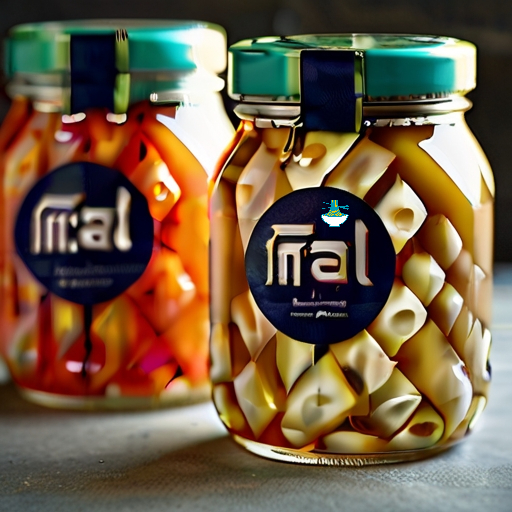Delve into the rich culinary heritage of the Faroe Islands with our exploration of fermented fish, a traditional delicacy that has been cherished for centuries. Known for its pungent aroma and unique flavor profile, fermented fish holds a special place in the hearts of Faroese locals, symbolizing the resilience and resourcefulness of island life.
In this immersive experience, embark on a journey through the process of fermenting fish, from the meticulous preparation to the patient waiting as the flavors mature. Learn about the cultural significance of this culinary practice, deeply rooted in Faroese history and folklore.
Discover the secrets behind the distinctive taste and aroma that make Faroe Islands fermented fish a culinary adventure like no other. Whether you're a seasoned food enthusiast or an adventurous traveler seeking authentic gastronomic experiences, this exploration promises to tantalize your taste buds and leave you with a newfound appreciation for the culinary traditions of the Faroe Islands.
Ingredients:
- Fresh cod or haddock fillets, deboned and skinned
- Coarse sea salt
- Water
- Seasonings (optional), such as black pepper, dill, or juniper berries
Instructions:
Preparation of Fish: Rinse the fish fillets under cold water and pat them dry with paper towels. Cut the fillets into smaller pieces, about 2-3 inches in length.
Salting: In a large non-reactive container, sprinkle a layer of coarse sea salt on the bottom. Place a layer of fish pieces on top of the salt, ensuring they are not touching each other. Sprinkle another layer of salt over the fish. Continue layering fish and salt until all the fish pieces are covered. The salt helps draw out moisture from the fish and inhibits the growth of harmful bacteria.
Weighting: Place a clean, non-reactive weight (such as a plate or another container filled with water) on top of the fish to press them down and help expel moisture. Cover the container with a clean cloth or lid.
Fermentation: Leave the container at room temperature for about 24-48 hours, depending on the desired level of fermentation. During this time, the salt will draw out moisture from the fish, creating a brine solution.
Check for Fermentation: After 24 hours, check the fish for signs of fermentation. It should have a slightly sour aroma and a firmer texture. If desired, you can ferment it longer for a stronger flavor, but be cautious not to over-ferment.
Rinsing: Once fermented to your liking, remove the weight and carefully rinse the fish under cold running water to remove excess salt. Pat the fish dry with paper towels.
Optional Seasoning: If desired, you can sprinkle the fermented fish with additional seasonings such as black pepper, dill, or juniper berries for extra flavor.
Storage: Transfer the fermented fish to clean, airtight containers and store them in the refrigerator. Fermented fish can last for several weeks when properly stored.
Serving: Fermented fish is typically served cold as an appetizer or part of a traditional Faroese meal. Enjoy it with flatbread, potatoes, or other accompaniments.
Note: Fermented fish has a strong flavor and aroma that may not appeal to everyone. Start with small servings to determine your preference. Additionally, ensure all utensils and containers used in the fermentation process are clean to prevent contamination.e locals, symbolizing the resilience and resourcefulness of island life.
Nutritional Values :
here are approximate nutritional values for common ingredients typically used in Faroe Islands fermented fish recipes:
Fish (typically cod or haddock):
- Calories: 82 calories per 100g
- Protein: Approximately 18g per 100g
- Fat: Around 0.7g per 100g
- Carbohydrates: Negligible amounts
benefits: Rich in protein, omega-3 fatty acids, and various vitamins and minerals such as vitamin D and selenium. Supports heart health, brain function, and overall well-being.
Salt:
- Sodium: Approximately 38,758mg per 100g (note: this is sodium content, not salt content)
benefits: Provides sodium, an essential electrolyte that helps maintain fluid balance, nerve function, and muscle contractions. However, excessive salt intake should be avoided due to its association with high blood pressure and other health issues.
Water:
- No significant macronutrients
benefits: Essential for hydration and various bodily functions, including digestion, nutrient absorption, temperature regulation, and waste removal.
Seasonings (varies, but may include herbs, spices, or other flavorings):
- Nutritional values can vary significantly based on the specific ingredients used and their quantities. They may contribute minimal calories, with potential for vitamins and minerals depending on the herbs and spices used.
benefits: Depending on the specific ingredients used, seasonings may provide additional flavor and potentially some health benefits. For example, herbs and spices can be rich sources of antioxidants and other phytonutrients, which have anti-inflammatory and disease-fighting properties.
Fermentation Agents (such as brine or whey):
- Nutritional values can vary based on the type and quantity used. They may contribute minimal calories, with potential benefits from probiotics.
benefits: These agents facilitate the fermentation process, which can enhance the digestibility of the fish and introduce beneficial probiotics to support gut health. Probiotics promote a healthy balance of gut bacteria, which is linked to improved digestion, immune function, and overall health.
It's essential to note that fermented fish is often consumed in small portions due to its strong flavor and high sodium content. Additionally, the fermentation process may introduce probiotics, which can be beneficial for gut health. However, because of its high sodium content, it should be consumed in moderation, especially for individuals watching their sodium intake.
For precise nutritional information, it's best to refer to specific product labels or use a nutritional database.


Comments